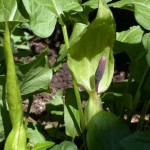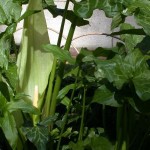Archive for May, 2009
Friday, May 29, 2009
Above, from left: dragon arum (Dracunculus vulgaris) growing in Bonnefont garden; detail of the spathe and spadix common to arums; detail of the reptilian markings on the stems.
Arums and other members of the botanical family Araceae are fly pollinated, and their flowers imitate both the color and the smell of rotting meat in order to attract pollinators. The little cuckoo-pint featured in last week???s post is by no means the most fetid member of the family. Cuckoo-pint???s enormous tropical cousin, Amorphophallus titanum, notorious for its overpowering stench, is native to Sumatra.?? The titan arum??is also cultivated in conservatories and gains worldwide attention when it blooms in botanical gardens like Kew. Read more »
Tags: aphrodisiac, Arum maculatum, cuckoo-pint, Dracunculus vulgaris, dragon arum, spadix, spathe
Posted in Botany for Gardeners, Magical Plants, Medicinal Plants | Comments (4)
Friday, May 22, 2009
Above, from left: Cuckoo-pint (Arum maculatum) growing in Bonnefont Garden; Detail from The Unicorn in Captivity that shows cuckoo-pint growing within the enclosure; Italian arum, (Arum italicum) growing in Bonnefont Garden.
Of all the spring-blooming “cuckoo plants” (see “Sumer is Icumen In,” April 3, 2009) associated not only with the bird but with magic, sexuality, snakes, and death, the cuckoo-pint or wake-robin is the most famous. Read more »
Tags: Arum italicum, Arum maculatum, cuckoo-pint, wake-robin
Posted in Botany for Gardeners, Magical Plants, The Medieval Calendar | Comments (9)
Friday, May 15, 2009
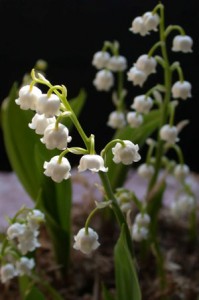
Above: Lily of the valley (Convallaria majalis)
White coral bells upon a slender stalk
Lilies-of-the-valley deck my garden walk. . . .
???Traditional English Round
In spite of its medieval association with the exotic Queen of Sheba (see last week’s post), this modest, northern European woodland flower is actually as easy to grow as it is familiar. Read more »
Tags: Convallaria majalis, lily of the valley
Posted in Botany for Gardeners, Fragrant Plants, Gardening at The Cloisters, Medicinal Plants, Plants in Medieval Art | Comments (7)
Friday, May 8, 2009
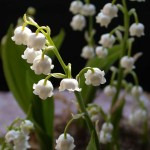
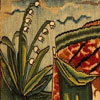
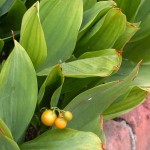
Above, from left to right: Detail of a potted lily of the valley forced for early display in Cuxa cloister; Detail of the tapestry The Queen of Sheba before King Solomon from Two Riddles of the Queen of Sheba; Lily of the valley fruiting in Bonnefont Garden in late summer.
I am the flower of the field,
And the lily of the valleys.
As the lily among thorns, so is
My love among the daughters.
???Canticle of Canticles (Song of Songs) 2:1-2
The lily and the rose are the chief adornments of the allegorical hortus conclusus, the enclosed garden of the Virgin rooted in the language of the Song of Songs in the Old Testament. Read more »
Tags: Convallaria majalis, lily of the valley, May, Solomon and Sheba, Song of Songs, Virgin
Posted in Gardening at The Cloisters, Medicinal Plants, Plants in Medieval Art | Comments (2)
Friday, May 1, 2009
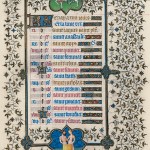


Above, from left to right: Calendar page for May, from The Belles Heures of Jean de France, Duc de Berry, 1405???1408/1409. Pol, Jean, and Herman de Limbourg (Franco-Netherlandish, active in France, by 1399???1416). French; Made in Paris. The Metropolitan Museum of Art, New York, The Cloisters Collection, 1954 (54.1.1); detail of the activity for the month; detail of the zodiacal symbol Gemini. See the Collection Database to learn more about this work of art.
Riding or walking, in companies of green-clad couples like the courtiers of King Arthur or the Duke de Berry, or by twos, or all alone, like the Dreamer of the Roman de la Rose or the falconer of the Belles Heures, there are many variations on the medieval set piece of the May morning???s outing to the greenwood.
Read more »
Tags: Belles Heures, Crataegus monogyna, hawthorn, May, maying
Posted in The Medieval Calendar | Comments (2)




